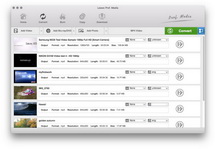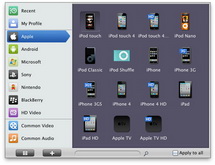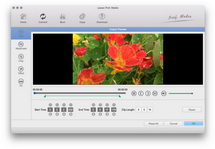As is known to all, iPhone does not support FLV video format. That is to say, people who want to download online FLV videos to their iPhone have to find another solution. The solution is obvious, because many video converters in market have now targeted the conversion from FLV to iPhone for Mac. Some well-designed video converter for Mac like Leawo Video Converter for Mac—the powerful Mac FLV to iPhone Converter can be of help. Simple operability plus high output quality are the advantages of this video converter.
There is a guide below to show you the way to convert FLV to iPhone on Mac. You just need to focus on it and you can master how to convert FLV to iPhone with Mac FLV Converter within only a few clicks.
Full Guide

Add video files to the program
You can either click on the Add button to import videos or directly drag the video files to the software. The loaded videos will be presented on the processing list. You can double click on the video to have a preview of the video.

Select the output file format
In the "Profile" menu, just choose iPhone compatible format as output.

Apply video editing features to the output
You can give some features to the output video through Trim, Crop, Rotation, Effect and Watermark.

Begin the conversion
After all settings have been done, start to convert FLV to iPhone videos by clicking on the Convert button.
Leawo Mac FLV Converter is also a multi-output video converter. If you are dealing with many kinds of video formats, it should be of great value to you. For more information, see the website of Leawo Mac FLV Converter.
Extended Knowledge

iPhone is an internet-connected multimedia smartphone designed and marketed by Apple Inc. with a flush multi-touch screen and a minimal hardware interface. The device does not have a physical keyboard, so a virtual keyboard is rendered on the touch screen instead. The iPhone functions as a camera phone includes text messaging and visual voicemail, a portable media player (equivalent to an iPod), and Internet client (with email, web browsing, and local Wi-Fi connectivity). The first generation phone hardware was quad-band GSM with EDGE; the second generation also adds UMTS with HSDPA.